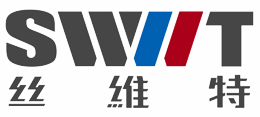Understanding Mixed Staple Fiber: A Comprehensive Guide to Its Properties and Applications
Upload Time:
2025-05-01
Mixed staple fiber is an essential component in the textile industry, particularly within the realm of chemical and functional fibers. This type of fiber is a blend of different staple fibers, which can be composed of various materials such as cotton, wool, polyester, or nylon, among others. By combining different fibers, manufacturers can enhance the properties of the end product, resulting in fa

Mixed staple fiber is an essential component in the textile industry, particularly within the realm of chemical and functional fibers. This type of fiber is a blend of different staple fibers, which can be composed of various materials such as cotton, wool, polyester, or nylon, among others. By combining different fibers, manufacturers can enhance the properties of the end product, resulting in fabrics that possess a unique blend of characteristics tailored to specific applications.
One of the primary advantages of using mixed staple fibers is the ability to achieve a balance between comfort and durability. For example, combining natural fibers like cotton with synthetic fibers such as polyester can create a fabric that is soft against the skin while also being resistant to wear and tear. This is particularly important in applications where both comfort and longevity are crucial, such as in activewear or home textiles.
In addition to improving comfort and durability, mixed staple fibers can also enhance the aesthetic appeal of fabrics. By blending different fibers, manufacturers can achieve a variety of textures, colors, and finishes that are otherwise challenging to obtain with single-fiber materials. This versatility allows designers to create innovative and visually appealing products that cater to a wide range of consumer preferences.
Another significant benefit of mixed staple fibers is their ability to improve moisture management properties. When combined with moisture-wicking fibers, such as those made from polyester or other synthetic materials, mixed staple fibers can help keep the wearer dry and comfortable. This feature is particularly beneficial in activewear and sports apparel, where moisture control is essential for maintaining performance and comfort during physical activities.
Moreover, mixed staple fibers can also play a crucial role in sustainability efforts within the textile industry. By utilizing a combination of recycled fibers and natural fibers, manufacturers can create eco-friendly fabrics that reduce waste and environmental impact. This approach not only meets the growing consumer demand for sustainable products but also contributes to the overall advancement of the textile industry toward more responsible practices.
In summary, mixed staple fiber is a valuable asset in the textile industry, offering a diverse range of benefits that enhance both the functionality and aesthetics of fabrics. From comfort and durability to moisture management and sustainability, the applications of mixed staple fibers are vast and varied. As the demand for innovative textiles continues to rise, mixed staple fibers will undoubtedly remain at the forefront of textile development, paving the way for new possibilities in fabric design and application.
One of the primary advantages of using mixed staple fibers is the ability to achieve a balance between comfort and durability. For example, combining natural fibers like cotton with synthetic fibers such as polyester can create a fabric that is soft against the skin while also being resistant to wear and tear. This is particularly important in applications where both comfort and longevity are crucial, such as in activewear or home textiles.
In addition to improving comfort and durability, mixed staple fibers can also enhance the aesthetic appeal of fabrics. By blending different fibers, manufacturers can achieve a variety of textures, colors, and finishes that are otherwise challenging to obtain with single-fiber materials. This versatility allows designers to create innovative and visually appealing products that cater to a wide range of consumer preferences.
Another significant benefit of mixed staple fibers is their ability to improve moisture management properties. When combined with moisture-wicking fibers, such as those made from polyester or other synthetic materials, mixed staple fibers can help keep the wearer dry and comfortable. This feature is particularly beneficial in activewear and sports apparel, where moisture control is essential for maintaining performance and comfort during physical activities.
Moreover, mixed staple fibers can also play a crucial role in sustainability efforts within the textile industry. By utilizing a combination of recycled fibers and natural fibers, manufacturers can create eco-friendly fabrics that reduce waste and environmental impact. This approach not only meets the growing consumer demand for sustainable products but also contributes to the overall advancement of the textile industry toward more responsible practices.
In summary, mixed staple fiber is a valuable asset in the textile industry, offering a diverse range of benefits that enhance both the functionality and aesthetics of fabrics. From comfort and durability to moisture management and sustainability, the applications of mixed staple fibers are vast and varied. As the demand for innovative textiles continues to rise, mixed staple fibers will undoubtedly remain at the forefront of textile development, paving the way for new possibilities in fabric design and application.
Relevant News











